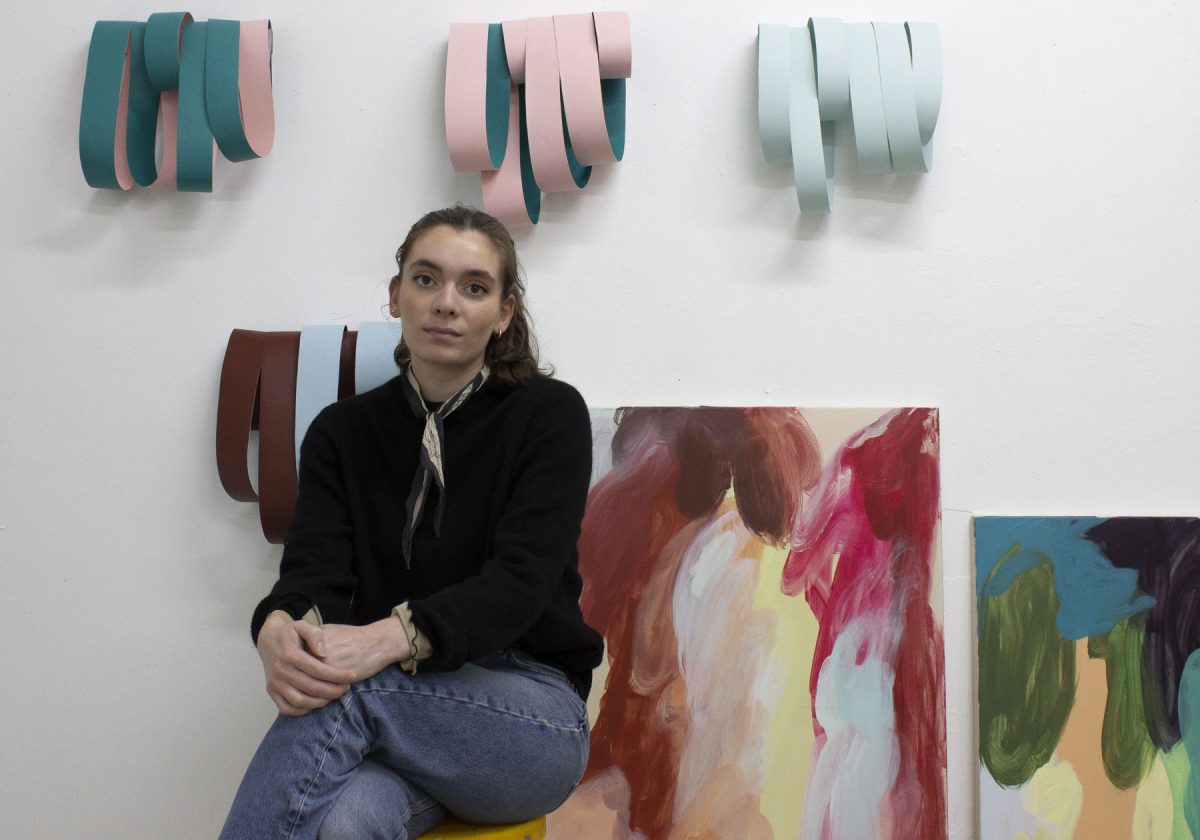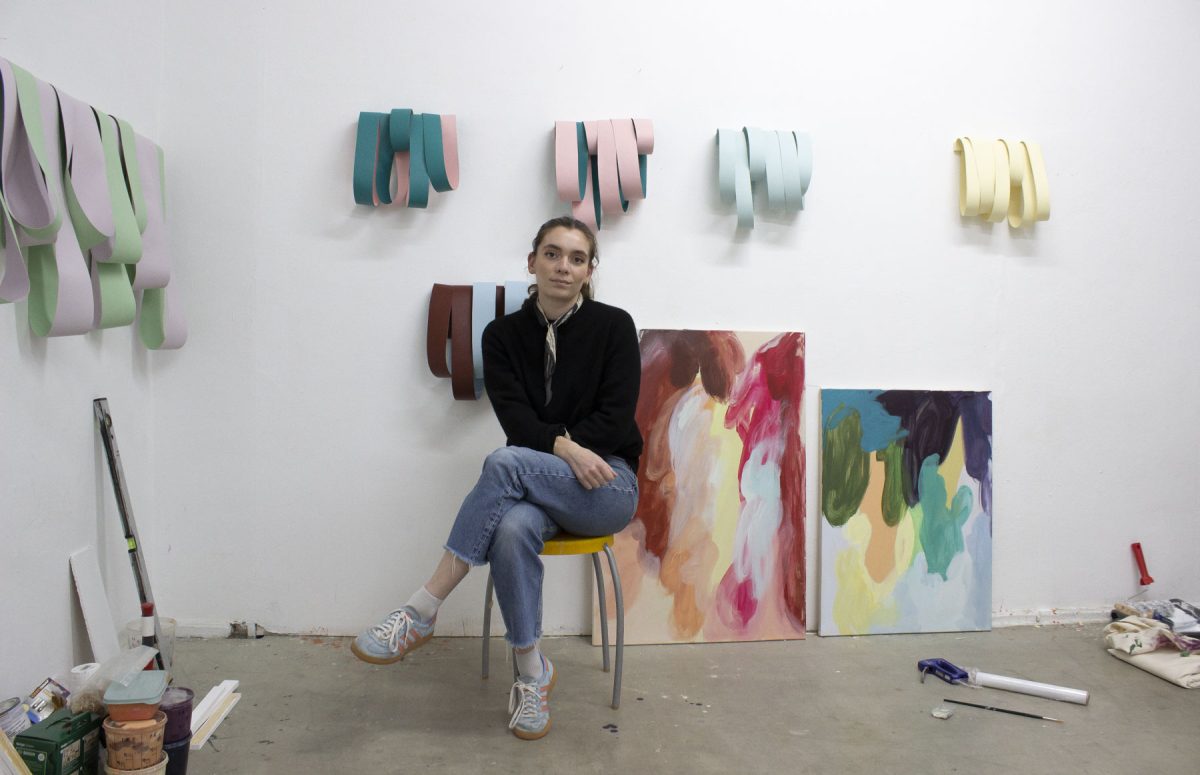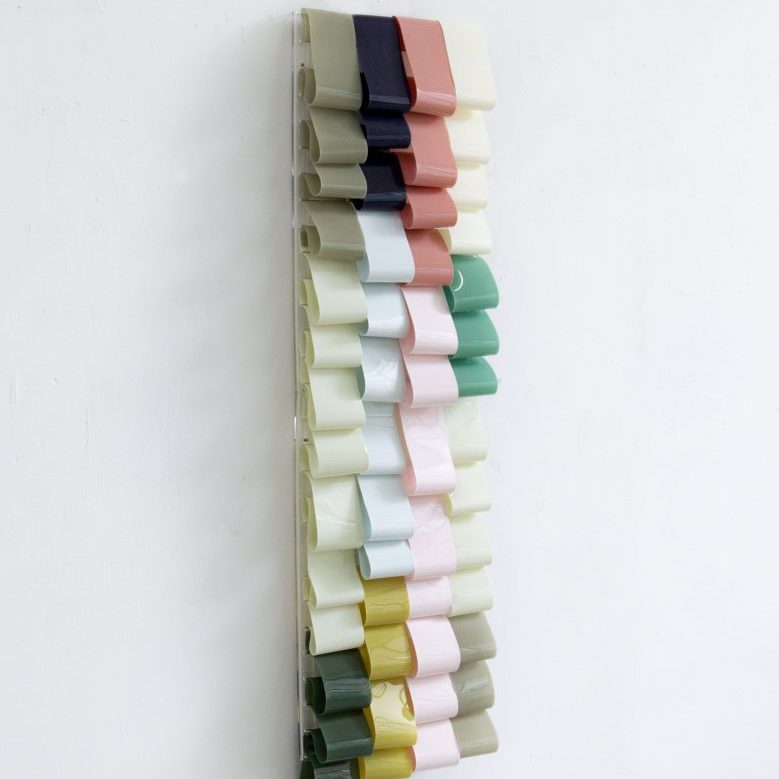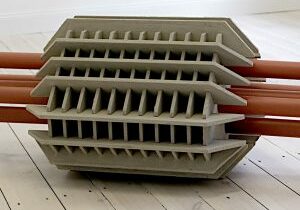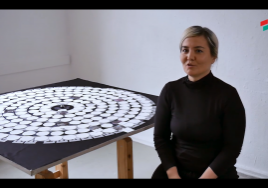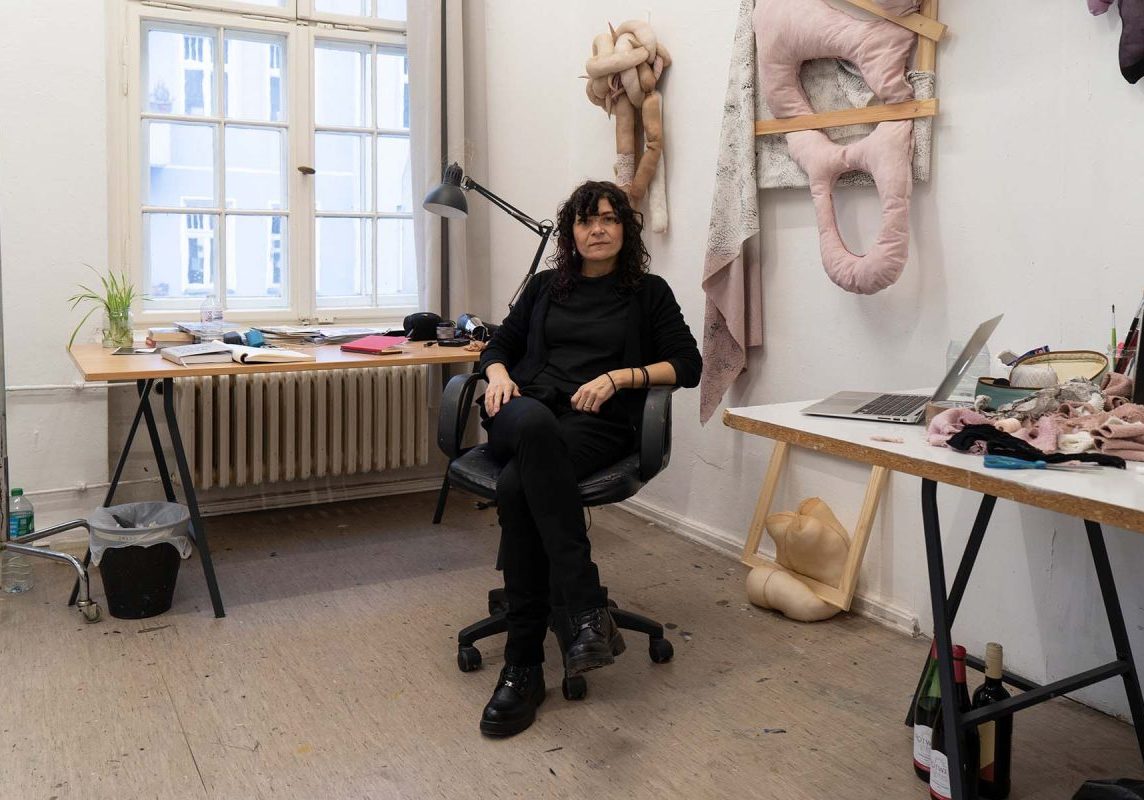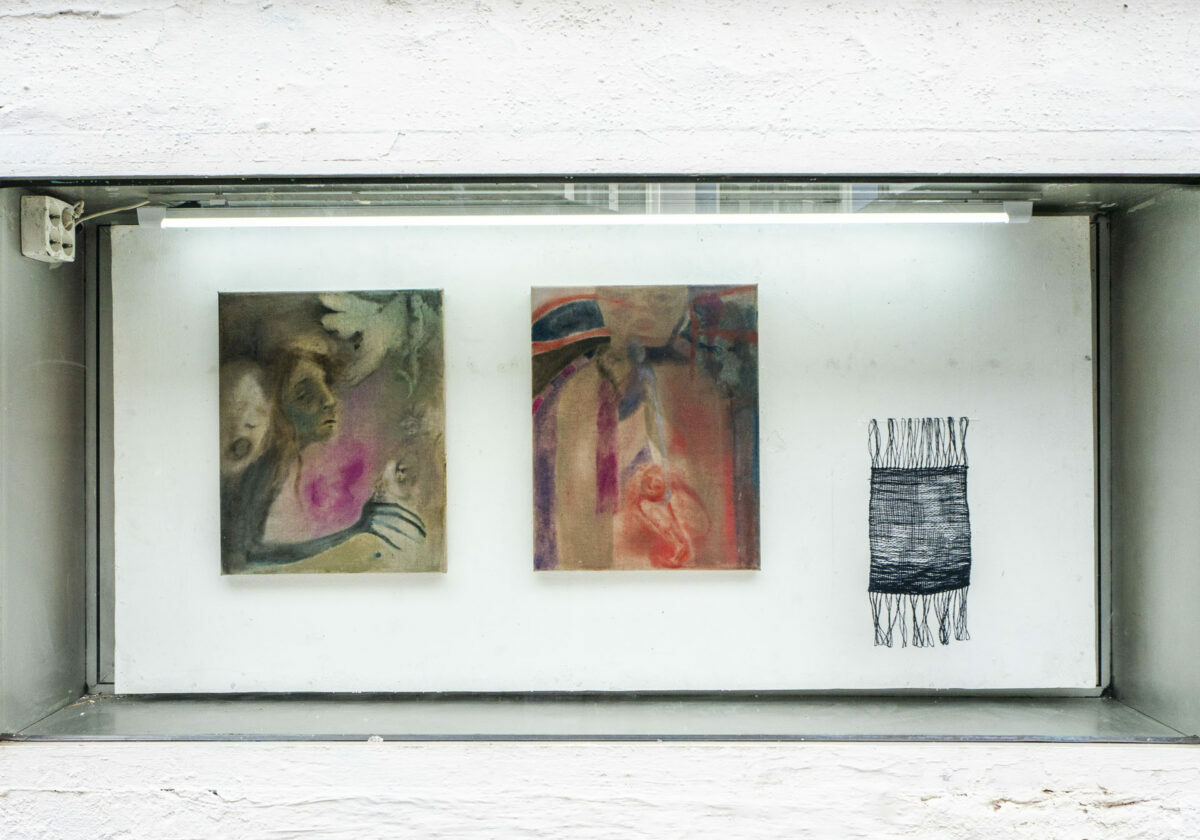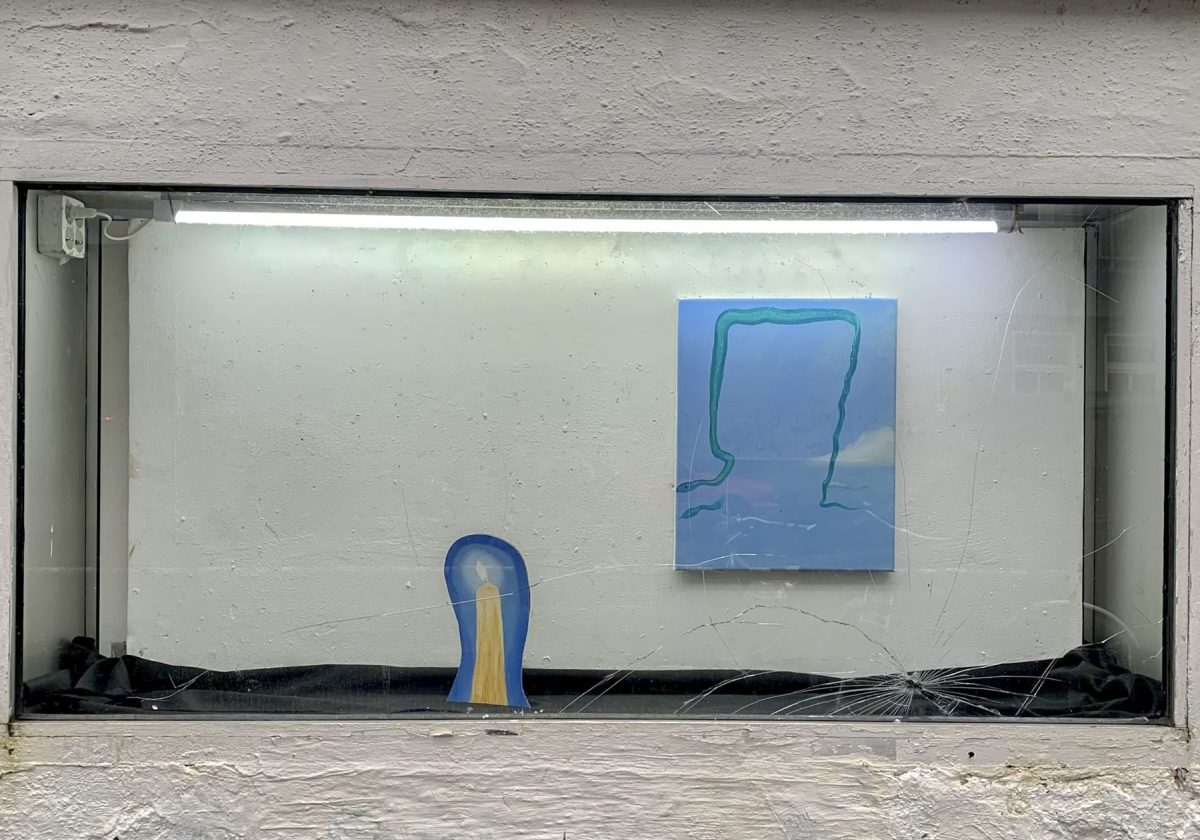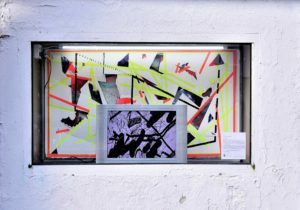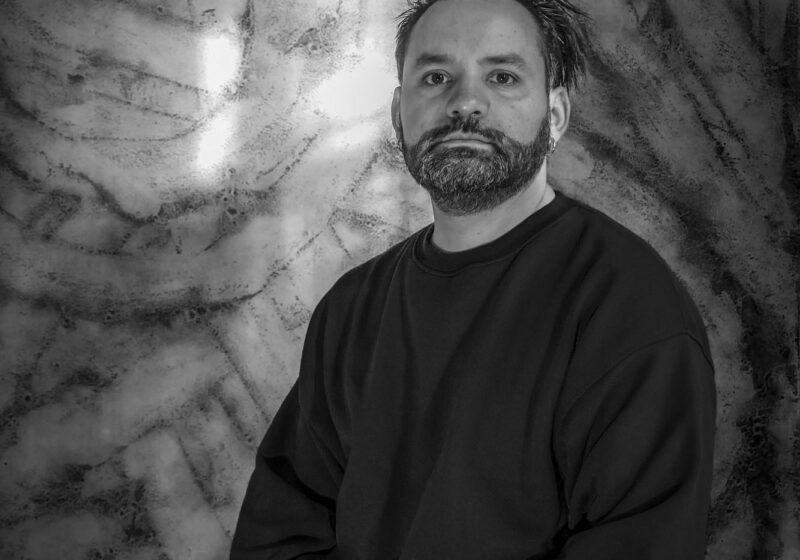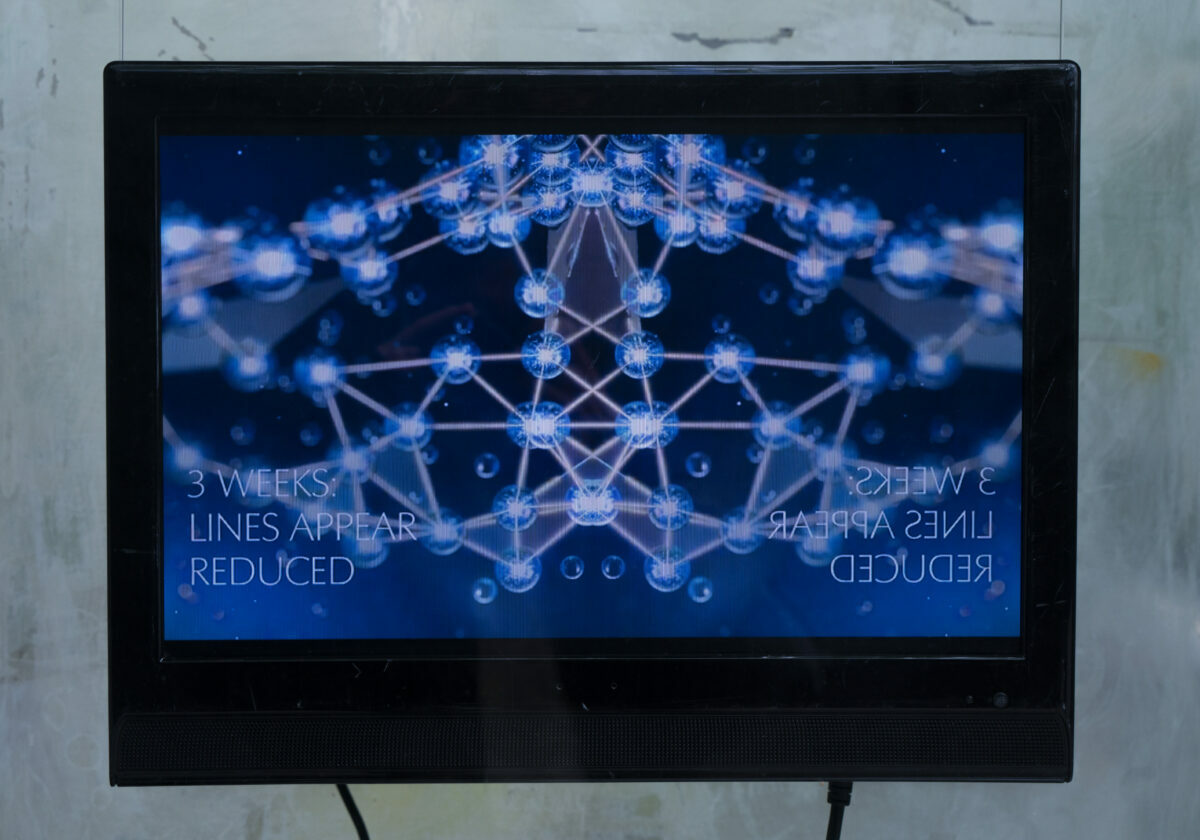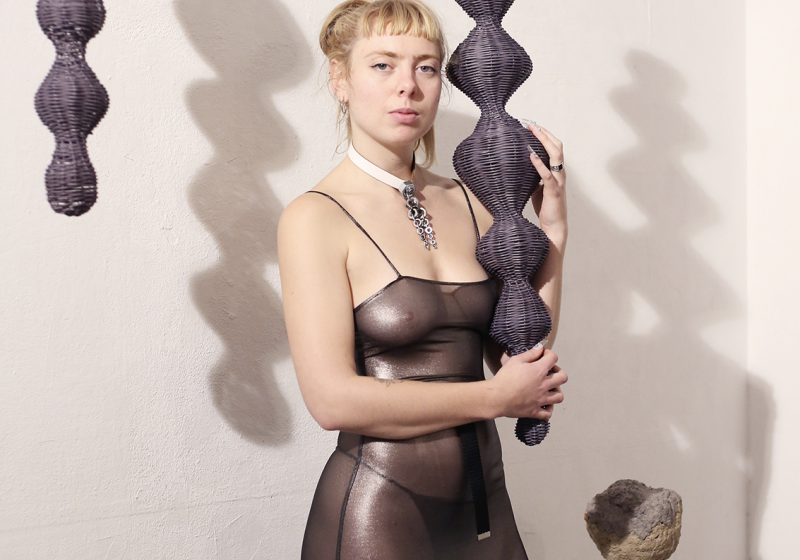Meet the Artist // Manon Steyaert
Manon Steyaert (b.1996) is a French-British artist based in London. Steyaert’s practice is situated between the two worlds of painting and sculpture, able to create both wall-based works and free- standing abstract sculptures. With a strong background in fashion as well as art, the artist pays homage to both traditional and non-traditional mediums throughout her practice. Focusing mainly on the aesthetic quality of silicone, Steyaert also utilises canvas, scrim, wood and metal, consequently drawing on the visual language of both architecture and painting.
Can you introduce yourself? How would you describe your practice as an artist? How did you start your artistic journey?
My name is Manon Steyaert, I’m a visual artist born in Belgium and growing up in France and I’m currently based in the UK in London. I’m predominantly working in painting and sculpture. I am very much colour driven and I try to express a form of curiosity within the viewer via draping canvas and silicone.
I studied at Central Saint Martins for four years in London and then went to Chelsea for a master’s for a year. That finished back in early 2020 and I’ve been a full-time practicing artist since.
I actually started out wanting to do fashion and had an internship at an English fashion house. That didn’t quite go my way in the end and I went into fine art. I am quite happy about it, but it meant that I carried over that fascination with materials. I always call myself a sort of a magpie, quite attracted to shiny things and things that can be aesthetically pleasing to the eye, so that’s what I try to communicate and that’s where the drapery has come in. It is about treating painting as fabrics, using 2D cutouts and making them into three-dimensional sculptures, like you would for garments.
Do you have an anecdote that stands out in your career?
I think the one time when I kind of realized why I was going into sculpture, because I was diving into painting and layering paint at the start of my practice back at university and found it just a bit too boring. I didn’t want it to be about my own work. I think when you have that happen, you start thinking around. You start questioning why you are attracted to a new medium or a new way of making the work.
As a kid I was taken a lot around museums. Museums and institutions sometimes hang their work in a traditional manner. And this was just so boring to be honest. When I was looking I was quickly hopping from one work to the other, not taking the time to appreciate the work. Now, that might be because I didn’t yet know what it was, but I think that’s what intrigued me about sculpture. To me, it was appealing how it’s in the middle of the room, it catches my attention. That’s what I think drew me to start making sculptures out of silicon, it was to invite the viewer to observe the surface and be almost besotted by it, so your attention is very much grabbed. You have to interact a little bit more and it just makes you aware of your position in the space in relation to the artwork and also other viewers, I find it quite interesting. It’s almost like a dance in a gallery, avoiding people whilst keeping your attention very much on the artwork.
Can you go a bit deeper in your process? What did you do before GlogauAIR? What are you doing here?
Before coming to GlogauAIR, as I said, I worked with silicon and it’s a very process-based practice. You become somewhat of a worker because it’s an industrial material. I’ve really enjoyed bringing it into my studio space and making it more of an intimate practice, using the material against its nature. The process is very chemical, it’s very time restrictive, there’s not really a lot of margin for error. Recently before coming here I was diving a little bit further into abstraction and what that meant visually, so blending colours a little bit more, being inspired by classical paintings – like Frederic Leighton and Alma-Tadema –
and I also try to communicate those transparencies. I was diving into the material even deeper by messing around with it, letting it control me a little bit more and it became really interesting, the blending of colours, because I didn’t think I would do that. I was very much into block colour because it was easier to process with silicon because it’s quite heavy and it asks quite a lot of you. Also it’s on the floor, so it’s very action-based. I’ve been having these ideas for a while. Then a residency was just the perfect time to do it and I also didn’t want to be sleeping in the same room as silicon. So I was thinking about what could I work with that I have some knowledge about but not completely. So, I came to painting again, because it is at the core of my practice, whether it’s an actual painting with paint or I call it a painting, like my silicon works. Now I’m working with canvas and draping it into these loop-like structures, wall-based sculptures and it’s that sense of a continuous line throughout the work for you to observe and to analyse the shapes and the depth and pull you into the visual like little bits of the piece.
Since colour is so important in your work, where are you taking inspiration from and looking for palettes?
I think a question I get a lot is “where does the colour palette inspiration come from?” and I think it’s subconsciously within artists themselves without really knowing too much why. It’s something that you’re drawn to naturally and getting to understand that is like looking inward and for me here it’s also looking outside, walking around and just seeing so many different colours. The ones that stay in my mind are the ones that I realise I’m seeing over and over again and they’re coming through into the work. For example, there’s a lot of blue this time and I don’t normally work with blue. But now it is always showing in my work and this is because outside my window there’s just blue and that’s the first thing I see with the greens. It’s just subconsciously constantly in my mind. Orange has always been present in my work and I’m glad to be working with it again for a wall-based installation that I’ll be putting together for Open Studios.
Inspiration comes from everywhere, just anything that grabs my attention long enough for me to realise that it’s grabbed my attention. Sometimes I take photos, sometimes it’s just the colour of a car with the background of the building or the street and other times it’s flowers. It’s both man-made and natural, there isn’t a really specific focal point.
What is your relationship with the art market? And what do you think about the art world in general?
It’s such a double-edged sword, the art market. Every artist wants to be able to live off their own work and that’s the dream, you know. I’m currently very fortunate to be able to do that, but there are moments along the way where the art market will be somewhat demanding of you if you are doing well in that sense and it’s good to be open-minded but also take everything with a little pinch of salt because of the power dynamics in the art world. It is also interesting to think about where the artist is placed in the art world. We’re the creators but you’ve got the art critics, the curators, the art galleries, the art fairs. Even though we’re somewhat the most important, as soon as a work leaves us, it’s like we’re no longer part of it really.
I quite like the business side of the art market. I find it quite interesting, the patterns and these job roles and how they affect levels in the market. I like working with galleries, I really like those relationships and discovering whether one clicks or not and then progressing that relationship into a friendship and then showing with them multiple times because they’re the ones that are gonna back you in terms of pushing your career. And it’s great when they can also be someone you can just talk to about your work and give you an honest opinion rather than “we know that these sell, can you just give us more of these?” That’s happened and you’ll do that to pay the bills. But honestly experimenting is so important for longevity.
Why did you decide to join this residency?
I’ve only ever done one residency before and that was back in 2020 in the midst of COVID in Lisbon and it was a real eye-opener in terms of my relation to my own artwork. I always thought that I was quite removed from my artwork. Being young as well was part of it. Not being able to connect to it too much because you don’t know too much about yourself. Then I realised that it’s beneficial for a practice to get you out of your usual habitat, your comfortable environment where you have all your emails and your demands from people, whereas here it’s time to actually think about your work, create something new and not have those pressures. I’ll go back to it when I leave here, that’s why I joined.
I think I was getting into three years straight of being in the same studio as well. It’s very singular being an artist. Sometimes you are in your studio by yourself. Even though it’s a massive community, it can still feel a little bit lonely. So I just wanted to be somewhere else, you know, get to know more artists, another city. Residencies are a great way to travel and work at the same time. I think that’s one of the massive benefits of being an artist, being able to take your work with you, in a sense, and create wherever you base yourself really.
What about Berlin as a city, do you find differences with London?
I had never been to Berlin before the residency, so this was extra special for me. I came at the perfect time of year as well, it’s just so enjoyable. Everyone here is super nice, social. There’s a massive aspect of community here, which I love, and it doesn’t feel suffocating like London does. In London, you’re rushing to go to the next place constantly and here it’s just a little bit slower, which I’m enjoying because I think that pressure of being really busy in London is echoed in how many people are in London, whereas here you’re just finding more time to breathe, take a second, read your book a little bit more. That’s what I’ve been doing. I’m finding that I need to go to more galleries, but I’m really liking the art scene here as well. It’s active, which is really nice. Of course, there’s tons of commercial galleries everywhere, but there are also a lot of independent spaces here. You’re seeing the real true emerging artists of Berlin, so that’s quite nice to see as well.
And what do you think about living with other artists?
I think this building itself, as we’re living in our studios, is a dual purpose space that we all have, it’s a bedroom and a studio. At the start, people stick to their rooms, and as we open up a little bit more, there’s much more collaboration and conversations, and I would hate to actually do a residency by myself, I think the whole point is to actually go and meet people, talk regularly with other artists that are in a completely different medium to you. Sometimes you’re just getting that perspective that you didn’t think you would get, because a lot of the time your artist friends from back home are somewhat similar to you in terms of their practice. It’s really interesting to get to know a variety of practices here, to be able to chat to artists and be very open-minded about the work.
Do you have plans afterwards? Are you going back to London?
I’m going back to London, but I definitely want to take this experience with me, to maybe do a residency every two years, or every year, if I have the chance. Back to London, I have a few shows and art fairs coming up, preparing for 2025. Art and commercial galleries’ agendas are set quite far in advance, so you always have to think a little bit further. It’s been tough, 2023 was a bad year for art, so it’s nice to see 2024 and 2025 are going to be quite good for the art market as well.
